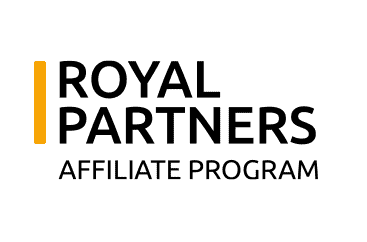How the YouTube algorithm works: a guide for affiliates

In this guide, we discuss how the YouTube algorithm works and how affiliates and digital brands can optimise their content to improve results on the platform.
YouTube has ruled the roost as the go-to destination for online video content for nearly two decades. Despite the success of emerging rivals like TikTok, YouTube remains the video content king.
For marketers and digital businesses, YouTube is a resource that simply cannot be ignored. With over 2.5 billion monthly users, there is enormous potential on YouTube, and a well-executed video marketing strategy can give businesses a huge boost. Let’s take a closer look at how the YouTube algorithm works and discuss how affiliates can tailor their content to suit it.
How has the algorithm worked in the past?
YouTube was founded in 2005, and since then its recommendation and search algorithm has gone through various updates and iterations.
Initially, the algorithm focused purely on views and clicks, in an attempt to help generate viral videos, which were an emerging phenomenon at the time. However, this led to a rise in clickbait titles and misleading video information, and as a result, YouTube had to rethink how its algorithm worked.
How the YouTube algorithm works today
Today, the YouTube algorithm works in a notably different way, taking a far more user-focused approach. Rather than looking at video stats like views, watch time, and interactions, it will instead analyse user behaviour and history to deliver results and recommendations.
The algorithm will look at the types of videos a user has watched in the past, paying particular attention to videos that have been watched the full way through. For example, if you watch lots of cooking videos, and have recently watched a full 60-minute pizza-making tutorial, the algorithm will deliver you more pizza-making-related content in the future.
The algorithm also looks at videos that are watched consecutively. If most people watch a documentary about the history of pizza after a pizza-making tutorial, this documentary will be recommended to people who watch the pizza-making video in the future.
How does the algorithm assess quality?
While the current algorithm takes a more user-centric approach, it also needs to ensure that the videos it recommends are of good quality and do not contain inappropriate or offensive content. This is a key aspect of how the YouTube algorithm works and is vital for affiliates and content creators to understand.
However, the algorithm doesn’t look at the content of videos to judge quality, it does so instead by analysing user behaviour. Watch duration and engagements such as likes and dislikes are taken into account, as is regional data such as location and language.
What does the algorithm prioritise?
To truly understand how the YouTube algorithm works, we must know what it prioritises. Relevance is key, video titles and descriptions must match search entries. Engagement is important too, with things like watch duration, likes, comments, and shares all taken into account. The algorithm also prioritises quality, as well as user history and behaviour.
However, each of these elements is focused on to varying degrees, depending on where and how videos are recommended. The algorithm will focus on video engagement and user history for videos recommended on the home page, video topics and user history for videos in the suggested section, and relevance and video engagement for videos delivered as a result of search queries.
So, now that we understand how the YouTube algorithm works, let’s take a look at how affiliates and brands can tailor their content for the platform.
Optimise metadata
Metadata includes video titles, descriptions, and scripts, and these act as indicators that tell the algorithm what your video is about. Ensure your metadata is relevant to the content within your video and pay attention to trending topics and hot keywords to take advantage of popular subject matter.
Contrary to popular belief, tags do not play a major role in catching the attention of the algorithm. Using too many tags on your videos can be deemed spam and actually hurt your video’s reach.
Choose an eye-catching thumbnail
While it’s not the only thing it looks at, the algorithm pays attention to the number of times a video is clicked on. One of the best ways to encourage users to click on and watch your video is to use an eye-catching thumbnail.
These images should jump out at viewers, giving them a taste of what your video is all about and use appealing graphics and imagery to draw them in.
Encourage engagement
Engagement is a key metric focused on by the algorithm. You should be encouraging viewers to engage at every possible opportunity; ask them to like, comment, and share your video across other platforms and social networks.
Comments are particularly valuable. Not only will they make your video more likely to be picked up by the algorithm, but they can also be used by you to evaluate viewer opinion and pick up suggestions to make improvements to your content in the future.
Conclusion
YouTube is a huge platform that is impossible to overlook for affiliates looking to implement a content marketing strategy. Use this guide to learn how the YouTube algorithm works and how to optimise your videos to maximise results.
If you’re looking for affiliate and content marketing insights, check out our blog or book a free call with a member of our team for a more personalised approach.
For expert advice and guidance, register to join our ELEVATE Summit in July, where you’ll have access to talks, panels, and workshops from key industry figures, all of which will be available to stream directly from our website.






